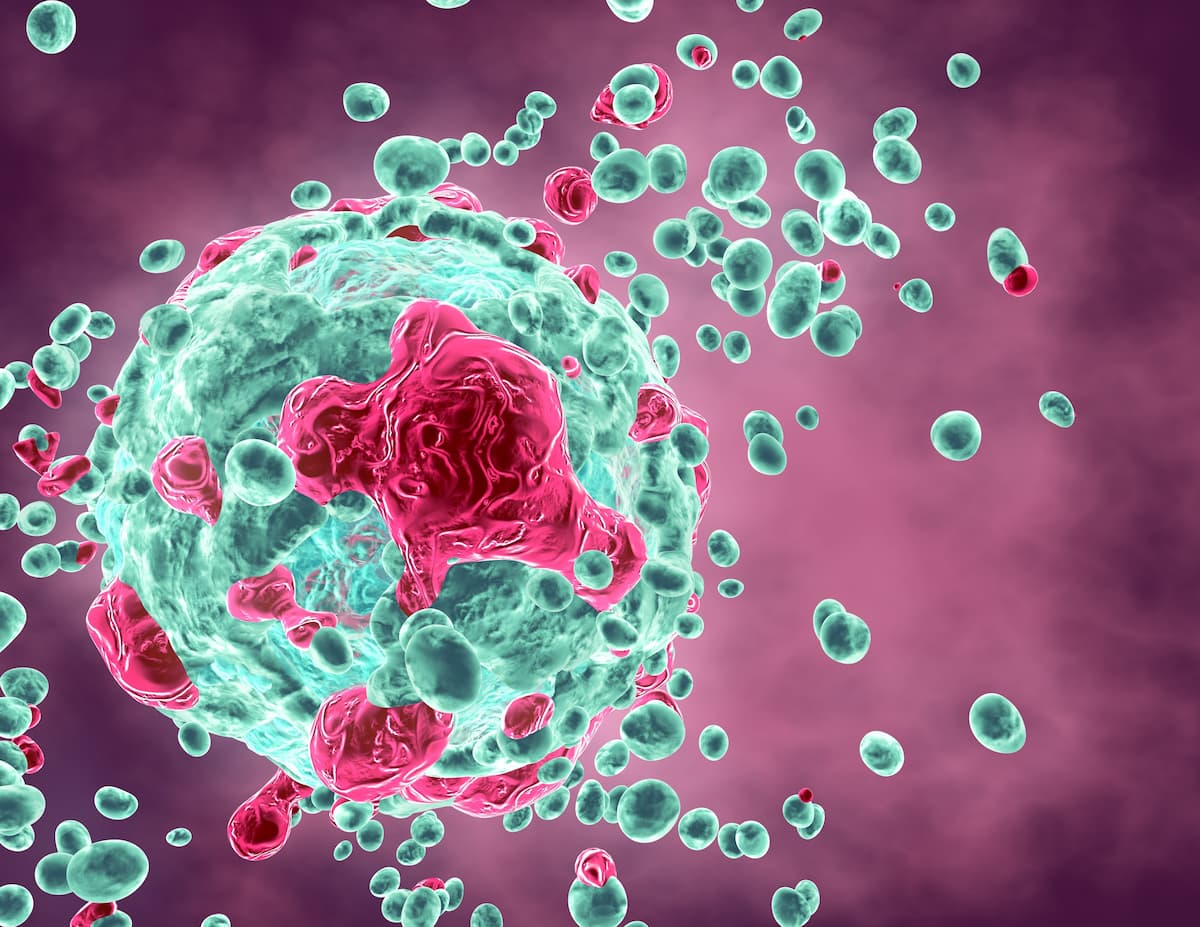Nivolumab Plus Relatlimab Shows Long-Term EFS Benefit in Advanced Melanoma
The B7-H3–low and TIGIT-high biosignatures correlated with superior event-free survival outcomes in those with melanoma treated with the combination.
The B7-H3–low and TIGIT-high biosignatures correlated with superior event-free survival outcomes in those with melanoma treated with the combination.

Extended follow-up from a phase 2 trial (NCT02519322) showed that nivolumab and relatlimab-rmbw (Opdualag), when administered before and after surgery, led to long-term benefit in patients with advanced melanoma, with investigators identifying a biomarker associated with resistance to the combination therapy.1
With a median follow-up of 47 months (range, 8.2-67.8), 80% of patients were event free and 87% were alive at 4 years. The median event-free survival (EFS) and median overall survival (OS) were not reached.
The recurrence-free survival (RFS) was 95% in patients with major pathologic response (MPR) compared with 60% in those who did not achieve MPR (P = .015). When factored by MPR status, the median RFS and OS were not reached; there were no OS differences in those with MPR vs those without, with rates of 95% and 80%, respectively, being alive at 4 years.
Longitudinally collected tissue samples were retrieved from all treated patients (n = 30). Samples yielding sufficient RNA and analyzable data for gene expression signature profiling analysis were available in 27 patients. Patients with MPRs had significantly increased expression in several signatures such as B cells, CD45-positive cells, CD8-positive T cells, and cytotoxic cells, among others. The only signature found to be elevated in patients with less than an MPR was B7-H3.
Additionally, in the 16 patients with posttreatment samples analyzed, only the macrophage signature was enriched in the samples from patients with MPR vs those with less than an MPR.
Receiver operating characteristic curves, dichotomized by MPR or less than MPR, were plotted to calculate the area under the curve (AUC) to predict MPR outcomes. There was a strong association between MPR and baseline IFN-γ and B-cell signatures, with AUCs of 0.905 and 0.881, respectively.
TIGIT demonstrated an AUC of 1.0 in its ability to predict MPR. High B7-H3 levels were highly predictive of less than MPR, with an AUC of 0.893. Furthermore, the TIGIT-high signature showed a negative and positive predictive value (NPV and PPV) of 100% each to predict MPR whereas high B7-H3 showed an NPV of 100% and a PPV of 92.3% to predict less than MPR.
There was also a correlation between several markers and EFS. All those with TIGIT-high or B7-H3–low signatures were event free at 4 years. Those with TIGIT-low or B7-H3–high signatures had worse outcomes (P < .001), with a median EFS of 15.0 months (95% CI, 1.6-not estimable) and 29% being event free at 4 years. When compared with B7-H3–low and TIGIT-high signatures, B7-H3–high and TIGIT-low signatures demonstrated worse clinical outcomes for EFS (P < .001).
“If immunotherapy eliminates most of the tumor before surgery, then we have sufficiently trained the immune system for an antitumor response, which minimizes the possibility of recurrence,” stated corresponding author Elizabeth Burton, PhD, executive director of the Strategic Research Initiative Development program at The University of Texas MD Anderson Cancer Center, in a press release on the study.2 “We are encouraged by these results showing the long-term benefit of this combination and approach for our patients and the opportunity it provides to learn as much as possible about what is driving this response to treatment.”
This trial included a total of 30 patients with resectable, clinically advanced melanoma who were treated at MD Anderson Cancer Center and Memorial Sloan Kettering Cancer Center. Treatment consisted of 480 mg of nivolumab plus 160 mg of relatlimab intravenously once every 4 weeks for 2 cycles before surgery and then up to 10 doses following surgery, for a total of 12 doses.
The trial’s primary end point was the determination of pathologic response. This analysis reported EFS, RFS, and OS as well as results from gene expression signature profiling.
“This study highlights the tremendous impact integrating excellent multidisciplinary care with team science can have on improving patient outcomes while advancing science and innovation. The neoadjuvant treatment approach allows us to quickly evaluate the clinical impact of a treatment and serves as a springboard for biomarker research,” said Burton.2 “This is a good starting point for where researchers can look in terms of mechanisms of resistance that could be potential therapeutic targets in the future.”
References
- Burton EM, Milton DR, Tetzlaff MT, et al. Long-term survival and biomarker analysis evaluating neoadjuvant plus adjuvant relatlimab (anti-LAG3) and nivolumab (anti-PD1) in patients with resectable melanoma. J Clin Oncol. Published online July 10, 2025. doi:10.1200/JCO-25-00494
- Most patients with advanced melanoma who received pre-surgical immunotherapy remain alive and disease free four years later. News release. The University of Texas MD Anderson Cancer Center. July 10, 2025. Accessed July 11, 2025. https://tinyurl.com/mrydba3u